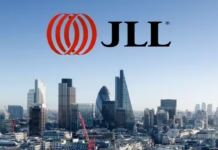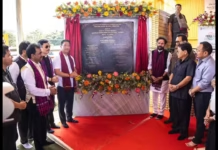Ahmedabad to Break Records with 150m Skyscraper
Ahmedabad, the largest city in Gujarat, is witnessing a dynamic shift in its skyline, with the upcoming construction of a towering 150-metre skyscraper set to redefine the city’s commercial landscape. This ambitious development, planned for the Gota ward near Nirma University, will stand as the tallest building in the city, surpassing the current record-holder a 147-metre commercial tower near Rajpath Club. Once complete, the new skyscraper is expected to soar over 45 floors, making a significant contribution to Ahmedabad’s rapidly expanding skyline.
The proposal for this landmark structure has already been submitted to the state’s special technical committee for approval. Once the green light is given, it will mark a key milestone in the city’s ongoing urban transformation. As Ahmedabad continues to push the boundaries of vertical growth, the new tower is expected to become a focal point for commercial activity and an architectural landmark.The rise of high-rise buildings in Ahmedabad is a direct result of the city’s evolving real estate policies. Over the past decade, the Ahmedabad Municipal Corporation (AMC) has approved 23 buildings over 100 metres tall, including both residential and commercial properties.
This shift towards vertical construction has been supported by the Gujarat Comprehensive General Development Control Regulations (CGDCR), which were introduced in December 2014. The policy reforms have raised the Floor Space Index (FSI) for key areas, enabling the development of taller structures. Specifically, Ashram Road, a key commercial artery, now boasts an FSI of 5.4, while other areas within 200 metres of Metro and BRTS routes have been allocated an FSI of 4.Prior to these regulatory changes, the city’s high-rise buildings were generally limited to around 22 floors and 70 metres in height.
However, following amendments to the CGDCR in 2017 and 2018, Ahmedabad saw a surge in approvals for much taller buildings. These new regulations, which include an increase in FSI to 3.5 and 4 for roads wider than 30 metres, have facilitated the construction of buildings exceeding 100 metres, paving the way for Ahmedabad’s skyline to rise ever higher.The drive for high-rise construction also aligns with broader urban trends in other major Indian cities. In Mumbai, for example, there has been a surge in the construction of towering commercial buildings in areas like Bandra-Kurla Complex and Worli.
Similarly, Bengaluru, with its rapidly expanding IT sector, has witnessed a boom in the construction of high-rise office spaces and residential complexes.
Ahmedabad’s growing real estate sector is attracting developers both from within Gujarat and beyond. Experts note that the city’s strong infrastructure, improved regulatory framework, and increasing demand for space have created a favourable environment for vertical growth. This transformation is not only about height but also about the city’s ability to adapt to the demands of modern urban living.
However, with the increasing construction of high-rise buildings, there is a growing emphasis on sustainable, eco-friendly, and energy-efficient designs. As urban populations expand, it is imperative that these new skyscrapers are built with environmental responsibility in mind. Developers are increasingly adopting green building practices, aiming to reduce the carbon footprint of these structures and promote energy efficiency.
The completion of this new skyscraper will undoubtedly mark a defining moment in Ahmedabad’s urban development, positioning the city as a key player in India’s real estate sector. As construction continues to rise, the city’s skyline will evolve, contributing to the region’s economic growth while balancing the need for sustainable and equitable urban spaces.







